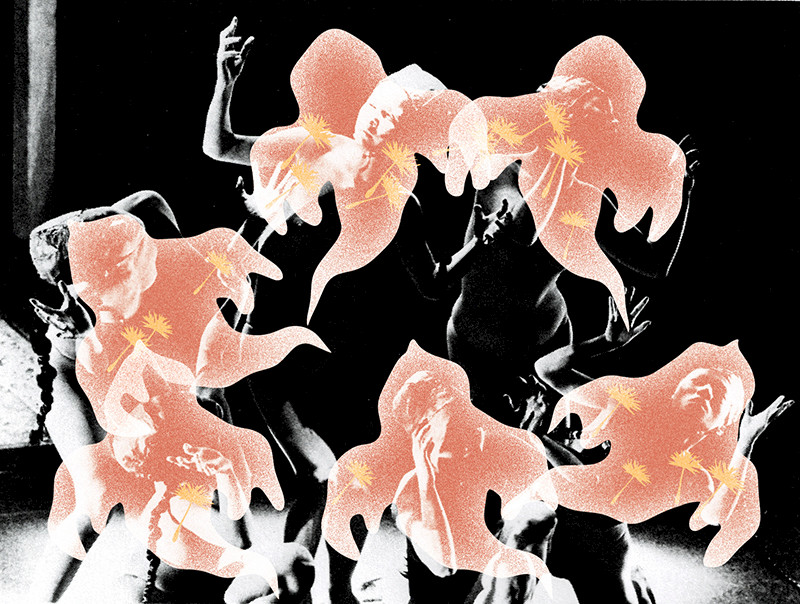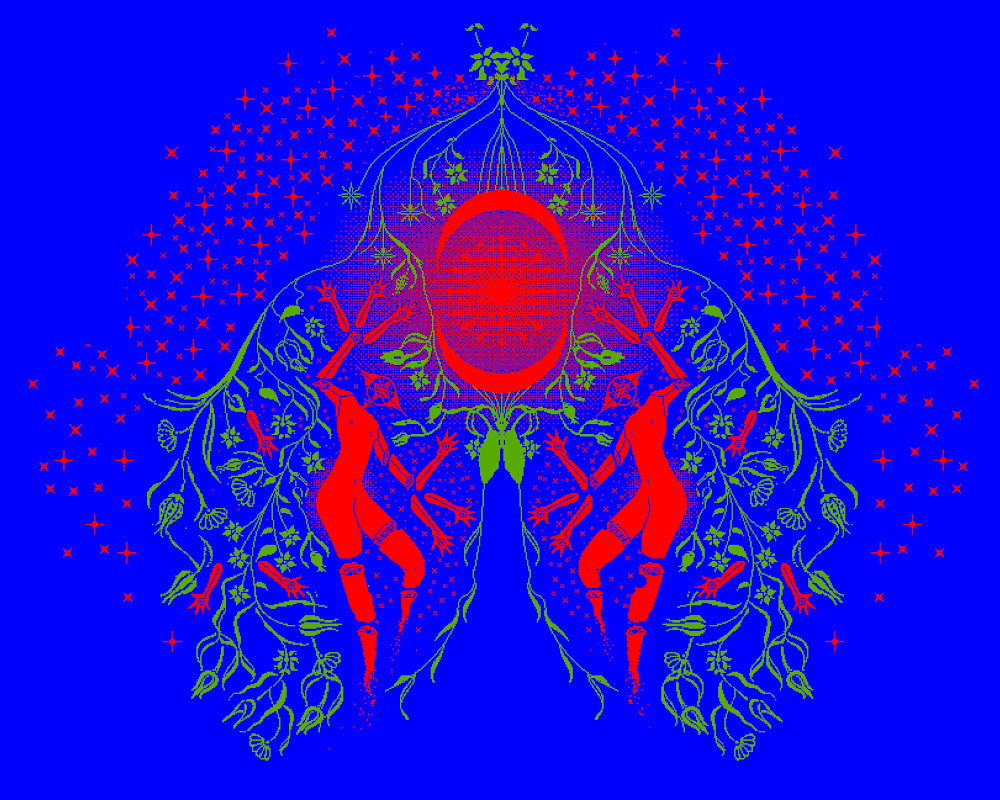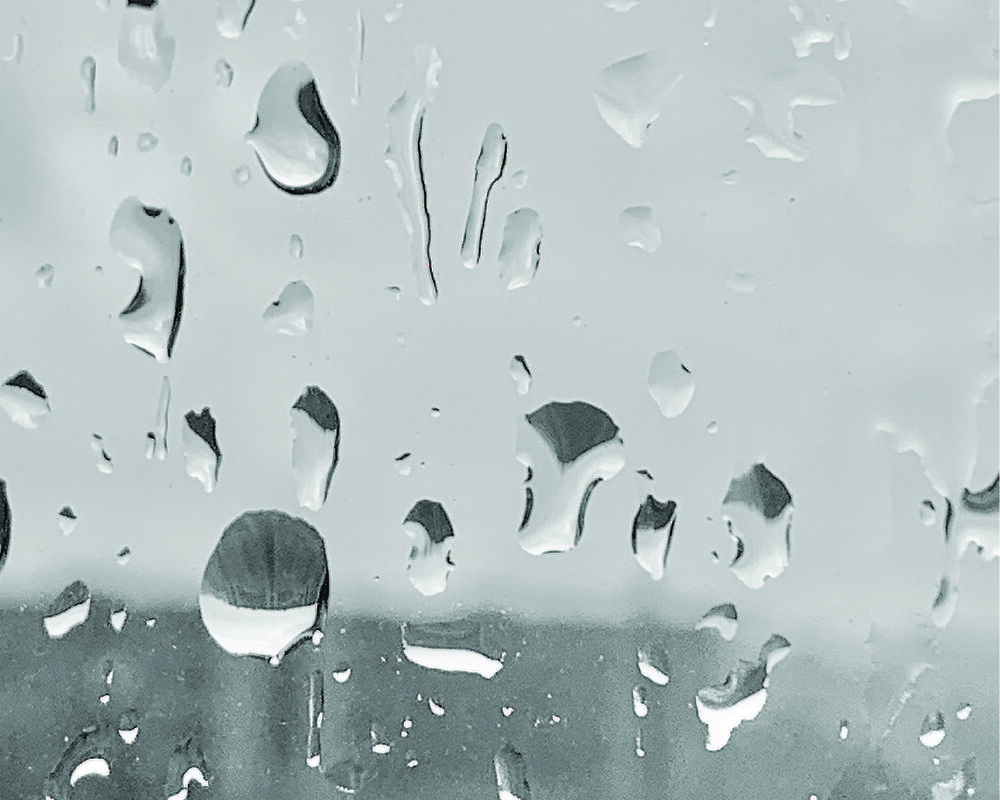column
and then we danced, on hosting ghosts and ghosting
Eva Susova
eva susova is an interdisciplinary artist working with performance, sound and sculpture. Their artistic practice is rooted in the study of embodied knowledge, the history of a female voice and ecology.
"I like to think of my works as fungi, the catalysts of the toxicities defining our current moment.”
They strives to interrogate existing concepts and categorisations perpetuating forms of oppression by actively listening and decomposing as a methodology for transformation.
eva obtained MA in Fine Arts at Sandberg Instituut and BA in Choreography at the SNDO at Amsterdam University of Arts. They are an alumnus of Rijksakademie van Beeldende Kunsten in Amsterdam (2021-2023). Their works and collaborations have shown in various venues, among many RongWrong (NL), bologna cc. (NL), Het Restort (NL), Arti et Amicitae (NL), Temporary Art Center(NL), Uferstudios Berlin (DE), DOCH- Stockholm (SE), STAMM studios Porentruy (CH), Veem House for Performance (NL) and Forum für Kunst Heidelberg (DE).
eva has been teaching multiple workshops focusing on somatic practices and performance at academies such as Gerrit Rietveld and Sandberg Instituut Amsterdam (NL), AKI Enschede (NL), ArtEZ Zwolle (NL), SNDO- the school for new dance development in Amsterdam (NL).
In 2017 they co-founded Jacuzzi, an artist-run space at the crossroads of performance, visual arts, and time-based media in Amsterdam.
Geke Zaal
Geke Zaal (1993) is an Amsterdam-based graphic designer, working independently and in collaboration with artists and culturally involved initiatives. Her work has a typographic nature; by treating text as an image, she investigates both the legibility and the playfulness of language. Occasionally she complements her work with graphic elements and makes illustrations.

column
The Guest at Work
Twice a day you walk up a mountain to connect to the internet, check your matches on Hinge, and text the girl you like from your language class back in the country you live.

essay
Where the Magic Happens
I find a room in the basement and a room in the attic and while sifting through these rooms, I realise that the room of my dreams has always been a room to work in.
6
min read

I host at least two languages, Czech and English, in this writing. As they cross-pollinate, the meaning of the word ‘ghost’ expands. Together with the English ‘ghost’, they mean spirit, soul, phantom, shadow, vision, essence, poltergeist, mind, heart and wraith. The Czech word for ghost is ‘duch’, stemming from the Indo-European language root *dheu, whose assumed meaning is breath and wind. To pronounce the word 'duch', you breathe in, roll up your tongue against your upper palette and apply a little pressure. When you breathe out, your tongue releases forward with the sound of the syllable 'du'. The sound of 'ch' comes out alongside the leftover breath.
here and gone
The immaterial, the ungraspable, that for some defines the unimaginable, is feeding our imaginations over centuries. Ghosts are the living proof of our ability to imagine, to experience the ethereal, the invisible. Ghosts are constantly walking alongside, through, behind, in front, and with our human presence, shaping our every move.
here and gone
I grew up in transition. In transitory space and time. The communist wall of the Soviet Union crumbled into pieces, as the capitalist block surged in from the west. The people of the Ústí nad Labem region in former Czechoslovakia crawled out of their deliberate or forced employments, as the national businesses were portioned as quickly as possible for the all awaiting newly-born entrepreneurs, aka. the old highly-ranked KGB collaborators. Panic, desolation, and depression radiated from the civil bodies. The exhaustion was high. Hope danced with fear before the backdrop of dry volcanos, chemical plants, power plants, mining and machine-building industries. No one had anywhere else to go.
Yet there was a lot of movement on all sides, a lot of sound and noise emitted from the surrounding tensions. The air was dense.
I needed to move, to process the tensions, to make sure they did not predetermine my being. I was gasping for breath, for the breath that would guide me into a liberating dance with ghosts rather than the dance of ghosts.
here and gone
"What if?", she said.
It was the winter of 2010 when I met the American choreographer Deborah Hay. I was studying choreography at the School for New Dance Development (SNDO) in Amsterdam where she was the artist in residency. She generously shared with us her incredible body of work through the creation of a performance titled Breaking the Chord. Every movement began with a question: “What if…?”. One ‘what if’ followed by another and another and another alluded to a unique dance of being here and now with everything that surrounded us in the time passing.
“What if where I am is where I need to be?”
I was one of her dancers, yet I was given an incredible opportunity to practice my dance in an intimate encounter with her choreographic mastery.
"I was never drawn to participate in sacred dance class. I feared my irreverence, cynicism, and snobbery. Little did I realize that my problem was linguistic. Sacred dancing is redundant."
The flood of dance aroused by the flirtation with 'what ifs' dissolved the limitation of my body. I turned into a host of unknowns.
"Here and gone," she said. The inevitable fragility of the present moment.
Here and gone - the simple condition of life. Here and gone - the embodied practice of detachments, of unlearning. Here and gone - the practice of stability in an unfixed position.
“Turn your fucking head”. A gentle reminder occasionally sounded from the speakers that amplified Deborah's voice. A gentle reminder of the ability to see what it is we are seeing and let it inform our dance. A gentle reminder to unfix the perspective.
here and gone
During my day I often steal a few minutes to practice dance, to unfix my gaze and perspective, to decentralize the human drama. The dance I do has no fixed forms and uses dance techniques just because they dwell in my bodily past. Figures appear as ghosts and new forms arise as my body engages in a polyphony of sensations, desires and needs. My dancing becomes my practice of disobedience. At first, I disobey me to play out other possibilities.
To unfix the gaze is to complicate the binary perspective of viewing the body as a subject or object by its urgency, by the bodily voice.
here and gone
Even if my body through the speculative question of ‘what if’ is technically leaving reality into virtuality, into an imaginary space, it is happening in this room surrounded by walls and filled with chairs, electric plugs, cables, and objects. My body remains in the awareness that this room is situated in a world at large. It remains and practices the awareness of the interconnections. It practices the complexities and solidarities of entanglements.
here and gone
"What if" she said as she curved my dance, as she got under my skin.
When the skin of an average human, such as me, unfolds, it covers about 1.7 square meters. It is quite a large map of complex visible and invisible geographies. To read such a map there is only one technology that cannot be replaced by disembodied technology. The feared technology of embodied thinking, feeling, and acting. Dance and movement research, the most de-funded and somewhere prohibited art form, teaches us how to constantly re-orientate, how to notice and consult our always shifting urgency, and how to foster ecosystems and build solidarities. How to defy oppressive technologies. How to stay aware, alert and disobedient.
“Ready, Fire, Aim”
When I explore my body's full capacity through the expression of movement and voice I can guarantee you that the voice of the viewer will call me a possessed, hysterical, ferocious, animalistic, emotional mess. But I am just a ‘duch’ on the screen, ghosting.
My body unfolds in a glitch. In the space between the virtual and the actual flirting with possible avatars by embodying them as I feel them passing.
here and gone.
In my dance, I host ghosts, their multi-headed presence, their sounding breath coming out of their numerous mouths. I befriend the strange, and the otherness becomes my condition.
here and gone.
Geke Zaal on the illustration:
This image resembles the urge to liberate through movement. The ghosts and the pollen are placed over an image of a group of female Butoh dancers—an image with a ghost-like appearance, with strong black-and-white contrast and ethereal postures. Butoh dancing arose in the late 50s, influenced by the post-war era and postmodernism, and broke free from traditional forms of Japanese performance. Through the movement, the dancers in this image seem to break free or rise above. The hosted ghosts rise with them, or evaporate out of them, as that which liberates and dances with them, or that which they are liberated from.





